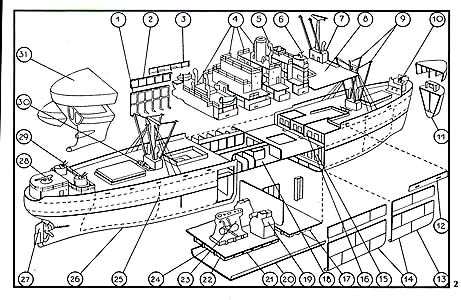Well, let’s look at a couple of things.
For the current problem with the kinks, maybe greensuff is the answer if you don't want to go for a full rebuild? You'll have a devil of a time getting it all smooth though, so I think the main question there is what will take longer: a full rebuild or a repair job. Something to consider is asking some model ship makers what they do.
If you decide it’s best to just rip the band-aid off and go with the full rebuild route, I don't think you have to go too far to get a reasonable result. But it may be worth asking yourself exactly what type of steamer you’re building.
Is this an interwar ship? Pre-world-wars? Trying to be as universal as possible will be a bit tough as there are some important design changes over time (raked bows, hull tapering, etc.). A hybrid between many forms may work, but you’ll definitely have to abandon those strong concave waterline cuts at the bow and opt for something smoother.
If this is primarily a commercial merchantman, this may be quite a bit easier as there’s less variation. Let’s look at some actual freighters.
First, here’s the #1 candidate for a tramp steamer: The Standard Built merchant ship.
In WWI, there was an admiralty push towards several common designs. They had more variations than the later WWII shipbuilding programmes, but were still far more standardized than pre-war ships.




Additionally, the Americans added to this with their “Hog Island” ship designs (another mass-production shipping programme), which were very similar.
(this first one is a troopship/hospital ship variant)



Note that both ship types feature a confusing silhouette that makes distinguishing the bow from the stern tough (not something I am suggesting you duplicate, since that will increase the size of the model for little benefit).
Many of these freighters were sold around the world and wound up in service in all sorts of countries, in tramp service, etc. and were enormously common during the interwar period as well as during WWII.
Second, during WWII proper, there came the Victory Ship and Liberty Ship designs. These were mass-produced by the allies in WWII to offset convoy losses and rapidly increase tonnage across the Atlantic and formed probably the largest shipbuilding programmes in history.
Victory Ships:



Liberty Ships:


In terms of size, tramps tended to be closer to Standard Built ships than Victory or Liberty ships, but were still well within the normal size range.
The size of tramp ships remained relatively constant from 1900 to 1940, at about 7,000 to 10,000 deadweight tons (dwt.). During World War II, the United States created the Liberty Ship; a single design that could be used to carry just about anything, which weighed in at 10,500 dwt
Many of those ships have almost no concave shapes in their bow taper, and older models are even straight-up convex. Alternately, if you’re building a ship that covers a larger span of time or other purposes, you may keep a more tapered bow (passenger ships, like warships, would be built more for speed and require a longer, more tapered bow, though either way, I would still suggest a smoother transition (my red line example).
One thing to note: If you look at the Bismarck and other large warships, you'll see they have almost an oval shape all 'round rather than the parallel or nearly parallel sides a freighter has (for sidling up to the dock to off load cargo and also to make them cheaper to build).
What are you planning in terms of modules? When I saw your first shape, I thought you could taper the whole front section's waterline, only just coming to a parallel at the end of the section. You really wouldn't lose any playing area, but lines would look much more graceful, even on a short ship. Part of the reason I ask is that you say you need to have a ship that's no more than 18" long, but with a modular ship design, why worry about a fixed length? Or maybe that's the minimum length? I.E. If you use the bow module, stern module and only one middle module, your ship should not exceed 18"? But if you want to use extra middle modules, you can? One thing about the freighters above is that they lend themselves to modular designs: “command” section with superstructure “cargo” section, with cargo hatches and cuts in the rail, etc.
How long is that bow section? I imagine it's going to be the biggest module - the stern can be a simple hemi-circle (or an overhanging stern as shown in the liberty ship image above if you want to be really ambitious, but that's a complex shape and lots of freighters didn't bother with anything so noticeable). If building larger ships is possible, then I think you can afford to have a little more taper to your bow. My guess is an 8" bow with other sections being 5"? Or a 9" bow, 4" stern, and 5" midsections? Or...?
I still think the project is a great idea and that a few kinks along the way are things that can be overcome. Hopefully some of this info comes in handy!